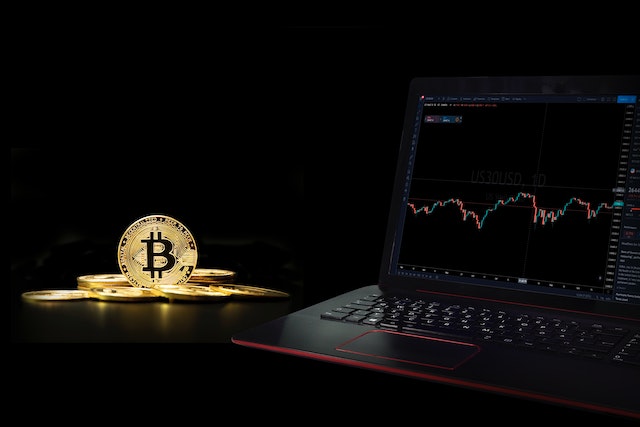Eager to explore the local Bitcoin database? 🕵️♂️ No worries! 🎉 Here’s a quick summary to get you started! First, download and install the Bitcoin Core software, giving you access to the Bitcoin full node 🖥️. Next, locate the “blocks” folder that contains your stored data, typically under the User/AppData folder 📁. To open the files within this folder, use the LevelDB library 📚 which simplifies the process 🙌. Lastly, browse, analyze, and manipulate the database according to your interest using programming languages like Python 🐍. Happy exploring! 🔍✨
Table of Contents
🔐 Unlocking the Secrets of Your Local Bitcoin Database: A Comprehensive Guide 🌐
Hello, aspiring Bitcoiners! 🙌 We know you’re excited about joining the world of cryptocurrencies, and we’re here to make your journey as smooth as possible. Today, we’ll explore the nitty-gritty details of your local Bitcoin database – the hidden treasure that empowers your digital gold transactions. 💰
So, are you ready to plunge into the fascinating depths of the Bitcoin blockchain? Let’s dive in! 🐬
📌 Table of Contents:
- What is the Bitcoin Blockchain? 🌐
- Understanding the Local Bitcoin Database 📂
- Setting Up Your Local Bitcoin Database 🔧
- Examining Your Local Bitcoin Blockchain 🧐
- Extracting Information from the Local Database 🔍
- Using APIs to Connect To Your Local Database 🚀
- Frequently Asked Questions (FAQs) ❓
💡1. What is the Bitcoin Blockchain? 🌐
The Bitcoin blockchain is a decentralized, public ledger that contains every single Bitcoin transaction that has ever taken place. This digital register ensures the security and transparency of all transactions, making it virtually impossible to forge or tamper with any data.
Essentially, the Bitcoin blockchain operates on a peer-to-peer network where the ledger is constantly updated and maintained by several nodes (computers) worldwide. Each node possesses an identical copy of the entire blockchain, which is divided into separate units called blocks. 🏗️
These blocks contain multiple transactions bundled together and are systematically linked in a chronological order. Each block also comprises a unique alphanumeric code called a hash that is derived from the data within the block.
Now that you have a rough idea of what the Bitcoin blockchain is, let’s unravel the mysteries of the local Bitcoin database! 🧶
💡2. Understanding the Local Bitcoin Database 📂
When you download the official Bitcoin software (Bitcoin Core), your computer becomes a node in the Bitcoin network. By doing so, you also gain access to the entire Bitcoin blockchain, which is locally stored on your computer.
The local Bitcoin database is where all the magic happens. It contains the critical information necessary for validating and verifying Bitcoin transactions. It consists of three main components, namely:
- The Blockchain: This is the actual chain of blocks that stores your local copy of the public ledger.
- The Chainstate: The chainstate database, also known as the UTXO database or “unspent transaction output” database, keeps track of the current balance of every address on the network.
- The Index: The index stores a reference to every transaction input and output, making it easier to search for specific transactions and addresses within the entire blockchain.
In the following section, we’ll set up a local Bitcoin database so you can tinker with it! 🔨
💡3. Setting Up Your Local Bitcoin Database 🔧
Alright, time to put on your hard hat and get to work! To set up your local Bitcoin database, follow these steps:
- Download: Head to the official Bitcoin Core website (bitcoin.org) and download the software according to your operating system (e.g., Windows, macOS, or Linux).
- Install: Once the software is downloaded, run the installer and follow the steps to install the application.
- Synchronize: Open the Bitcoin Core application, and you’ll be prompted to synchronize your local database with the latest blockchain data. This process can take anywhere from a few hours to a few days depending on your internet speed, so sit back, relax, and maybe even binge-watch your favorite series in the meantime! 🍿
- Secure: After synchronization, encrypt your wallet with a strong and unique passphrase to secure your funds. But tread carefully, as losing this passphrase means you’ll lose access to your Bitcoin! 😱
Voila! Your local Bitcoin database is now up and running. Let’s explore it further! 🔎
💡4. Examining Your Local Bitcoin Blockchain 🧐
It’s time to go treasure hunting in your local Bitcoin database! But first, locate the “bitcoin” folder on your computer:
- Windows:
[Drive]:\Users\[Username]\AppData\Roaming\Bitcoin - macOS:
/Users/[Username]/Library/Application Support/Bitcoin - Linux:
/home/[Username]/.bitcoin
Inside the “bitcoin” folder, you’ll find three essential files:
- blocks: This folder stores the actual blocks in your copy of the blockchain.
- chainstate: The chainstate folder contains the UTXO database – a record of all unspent transaction outputs available at your disposal.
Disclaimer: We cannot guarantee that all information in this article is correct. THIS IS NOT INVESTMENT ADVICE! We may hold one or multiple of the securities mentioned in this article. NotSatoshi authors are coders, not financial advisors.

